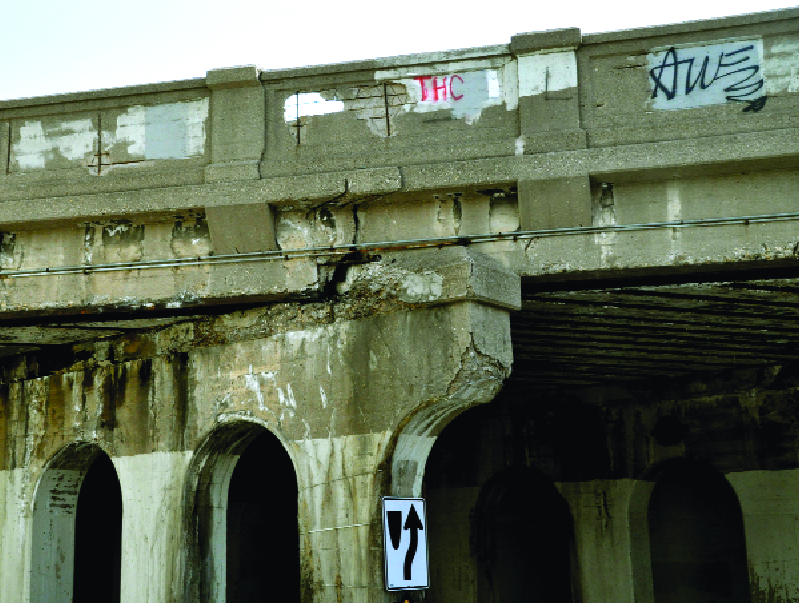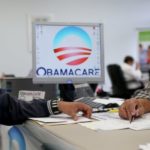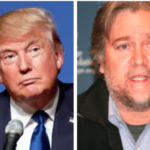President Donald Trump held court at the White House on Tuesday to trumpet his ability to fix the nation’s crumbling infrastructure, even if that means repairs – rather than replacement – for the nation’s closed, unsafe bridges.
In a largely unfocused discussion with governors, mayors and Cabinet members, Trump said that he favors fixing dilapidated bridges rather than replacing them. Some structures in that category are nearing 100 years old – or more.
“They need paint, they need some fixing, not even a lot of money,” the president said.
Last year, the American Society of Civil Engineers estimated that the overall price tag for needed U.S. infrastructure improvements by 2020 could reach $3.6 trillion.
Trump, the former New York City businessman, also described how his company built an ice rink in Central Park on time and under budget, “which is no different than building a roadway or a bridge or a tunnel.”
In front of this facile audience, Trump incorrectly said that many unsafe bridges across the country are still in use and that safety should be key before these structures “are going to go down.” At the same time, the president seemed unaware of the detailed process at the federal, state and local level to determine which structurally outdated bridges must be shut down for safety reasons – or engage in vehicle weight restrictions.
84,000 ‘obsolete’ bridges
As of 2015, the U.S. Department of Transportation reported that more than 84,000 highway bridges have been closed or restricted because they are “obsolete” and unable to handle highway traffic. Trump’s Secretary of Transportation, Elaine Chao, said little and never made this distinction during the president’s political parlay.
The highly touted $1.5 trillion Trump administration plan would invert current funding for highway and bridge repairs from 80 percent federal money to a 20-80 split, with most of the funding coming from cities, states and construction contractors securing investments on each project. Of the $1.5 trillion, Washington would put forward just $200 billion. Trump said the intent was to “return power to state and local government.”
Critics say the proposal would force local and state governments to further increase taxes in order to raise enough revenue to fix pothole-pocked highways and rusty bridges.
Cities, counties and states have already boosted funding, such as gas taxes, for transportation infrastructure due to a lack of adequate federal spending. More than 30 states have raised their gasoline or other taxes in recent years to try to meet infrastructure needs.
The White House discussion on Tuesday was vintage Trump, with the president engaging in exaggerations and mistruths and unable to stay on topic.
Government permits are not the problem
In recent weeks, he has said that a burdensome federal permit process for highway and bridge projects often delays projects for 10 years. At the White House conclave he suggested that some permits – mostly to protect the environment — are dragging on for 25 years. He told a Miami official that, under his plan, permits will be approved so fast for south Florida that “it will make your head spin.”
Yet, the Government Accountability Office has reported that the median time to complete environmental impact statements required for many major transportation projects was seven years in 2013, according to USA Today. But that window has been cut to less than four years for those projects started since 2005 due to streamlining changes adopted as part of a federal highway and transit funding bill approved that year, according to the government watchdog agency.
In addition, a report released by the Department of the Treasury in December 2016 examining impediments to construction of 40 major transportation and water infrastructure projects around the nation found that a lack of funding was a far bigger factor than regulatory red tape for delays.
Under the administration’s plan, proposals to serve impoverished communities where state and local money is scarce, including improving drinking water in a place like Flint, Mich., could be given short shrift. Financial investors may not see a big profit in such a project.
During the Trump-dominated White House discussion, talk about water and sewer pipes, Internet broadband, the nation’s electrical grid, airports, dams and mass transit were missing.
Instead, the president veered off into topics such as immigration, international trade and the U.S. failure to force Germany and Japan to pay back the United States for its post-World War II Marshall Plan.
He demonstrated a lack of understanding of the federal process of dredging commercial ports, claimed that the federal tax reforms are “unbelievably popular” with the public, asserted that the Environmental Protection Agency’s dramatic cutbacks will produce a “perfect, clean environmental climate,” and repeated the falsehood that U.S. black unemployment is at an all-time low.
Other than that, Mission Accomplished.








